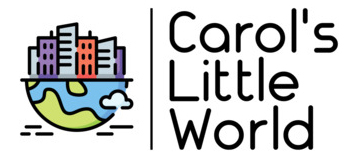
Voodoo Barbie – Close Up (New Orleans St. Louis Cemetery), originally uploaded by carolsLittleWorld.
So, today I thought I would actually start to “talk turkey” and go over a couple of scenarios with you. These are actually drawn from past experiences and photographers I know, so they are not entirely made-up, although I have changed the names to protect the “innocent.”
As you read these, I would like you to think about what you would do in each of these scenarios. What you would recommend, what you would say if each of these people came into your studio (or your life!) and asked for advice. What would you say to them about “going pro?” In turn, I will also share with you the recommendations I gave to each of them and you can maybe see how close (or how off the mark!) we are.
OK, so here goes.
Case 1: “Frank.”
Frank makes about 50K a year and currently works in a bank. He has saved 100K (in savings, mutual funds, etc.) and has a small 401(k) (not enough quite yet to retire but a start at a nest egg.) He has a show record, having done a few shows here and there, mostly local (local shows with local art groups.) He specializes in wildlife photography and, when he can, travels to places like Alaska and northern Canada so that he can go and shoot animals like wolves, moose, etc. in their native habitat. He generates about 10K per year in sales, although he does not promote himself all that much (other than the local shows he feels comfortable doing.)
My recommendation: Work one more year to generate increased sales. Increase on-line presence and try to establish a gallery “foothold” that you can use as a storefront for your sales. Work to establish a relationship with a gallery owner and get your work actively carried in a gallery that has regular sales. Get your work out of the local market only and show stuff outside of your comfort zone-start going “national” to help increase the prices your work can fetch. (Build more of a national name for yourself.)
What he wound up doing: Staying at the bank. In this case, “Frank” was not that excited about photography. Sure, he loved shooting pictures and, yes, he had some sales but, to him, his photography was more a hobby than a “day job.” He wound up keeping his job at the bank, taking a few courses at local art schools, and continuing doing shows with local art groups in which he felt comfortable. Truthfully, he is in a very good place, because he can later decide to “go pro” while keeping his day job and gradually increasing his sales (if he is so-inclined.) He has also gradually started to show his work to a broader audience (he’s getting more comfortable in this regard.)
Case 2: “Sally”
“Sally” makes about 35K per year working at a non-profit. She hates her job and has always shot local bands. She never thought about “going pro” before, having always shot bands on the side (nights, weekends, etc.) She has a publication record, as some of her band shots have been used in publicity, magazines, newspapers, etc. and she has done some shows, mostly group shows from local art and photography groups, though she has done some larger shows featuring multiple pieces of her work. “Sally” has very little savings and lives paycheck to paycheck. She has no 401(k) or IRA to speak of and shares a home with other folks who help with the rent.
My recommendation: Save, save, save! Create a cushion for yourself (even if it’s only a small amount of savings) and go pro. Use the time you are continuing your job (working) to get more shows and start to think about promoting your work to maximize the publications.
What she did: After a big “blow up” with her boss, “Sally” wound up leaving her job suddenly. She was unemployed for a spell, a time which she used to promote her photographic work as best she could. She is now working again at a semi-photography related job and hopes to find steady work doing something in marketing or in a field that will allow her more of a creative outlet. She still shoots bands a lot and is making it work.
As an aside, I have always thought that “Sally” would be the one to really “make it” from the Austin art scene. Because of her low-paying job, she has nothing to look back upon (she’s not going to miss that 35K a year job with an angry hot-headed boss) and because she is focused on music photography she could really carve out a niche for herself. Also, it would not be hard for her to generate 35k a year in photography sales, especially since she has shot bands for a long time and now has shots of artists who have passed away (Stevie Ray Vaughn, for example) that can generate revenue for her over time. My advice to her is to stay the course, continue shooting bands, and grow her photography into a full-blown career, even if the “day job” route takes her in a few different directions. Of course, since she is one of my friends, I still yell at her for not having enough savings.
Case 3: “Norm”
“Norm” makes about 100K a year as a computer programmer. He works in a cubicle behind a desk all day at a very boring job. He hates his job and really wants to be outdoors more often. He has a 401(k) from work with matching benefits and a great health plan, plus he is able to afford the latest in camera gear, new printers, etc. but he is not able to generate much in the way of sales from his photography work. He is lucky to post 3k a year in sales, although he does not work very hard at getting sales. He has shown his work a bit, mostly in group shows with his local camera club. He really dislikes high-tech and wants to shoot professionally. He would love to be a stock shooter, working for a place like Getty or Corbis.
My recommendation: Again here, it’s save, save, save. Create a financial cushion for yourself by saving up a nest egg and use the cyclical nature of the high-tech industry to your advantage. High-tech is prone to large boom and bust cycles so, when things are low and jobs are harder to find, use that time to further your photography. Start selling your work! It’s very easy to invest in new camera gear but to conveniently “forget” to invest in business cards, a good website, and really build a good portfolio of work. You need all of those things to be a successful photographer, not just the shiny new camera fear. Get your business lined up so that you can capitalize on any industry downtrends and use that time to focus on your photography. Consider doing contract work that allows you more freedom to do some shooting and gradually “phase-in” your photography career as you “phase-out” your high-tech career (if you can.)
What he did: Stay put! “Norm” felt he was making a lot of money in the high-tech industry and, even though he did not care for it, the money was too good. He decided to continue with his passion (photography) as a hobby and build up a business gradually, opting to travel on exotic workshops (which he could afford!) and also devote some time to social media and web sales (which were easier for him to fulfill given his day job.) He sells his work though sites like ImageKind that allow him to keep shooting (what he loves to do) without having to pressure himself to generate a specific amount of sales every year. At some point, given his rate of savings, he will be able to “retire” and do nothing but photography. His work is gradually improving and he is learning a lot about photography so I expect him to one day be a success (and be out of the office for good!)
I hope these scenarios will help you see some of realities of going “pro.” Please look for more from the going pro series in posts to follow.
Until next time…

Author
one factor that wasn't mentioned is for those photographers who have a family dependent on them-there must be some with spouse and kids! lol…
Author
Yes, spouses and kids and, sometimes, if they are lucky, they have a spouse or kid who can look after them. That is, they can be taken care of by somebody in their quest for artistic freedom and professionalism.